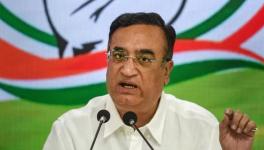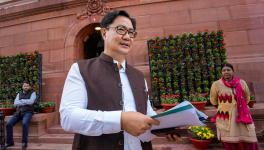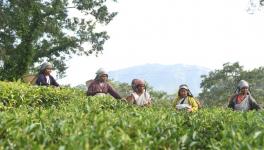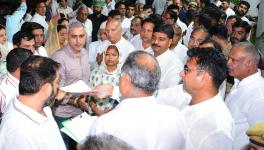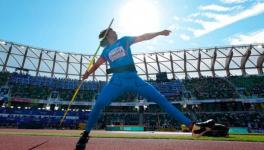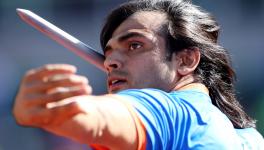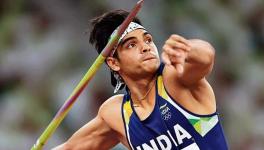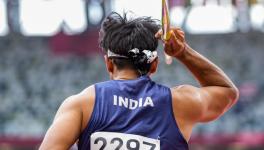The Commonwealth Impact: How India Woke Up to Need for Special Funding of Olympic Athletes
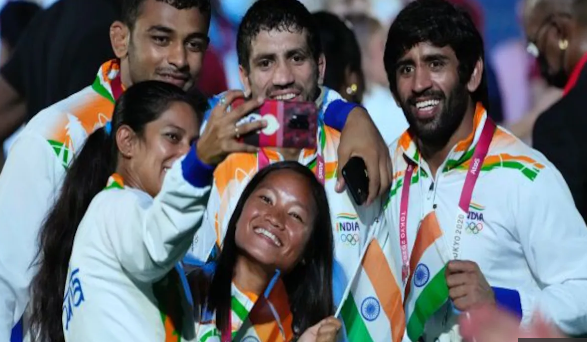
Indian athletes during the closing ceremony of the Tokyo Olympics on Sunday (Pic: Firstpost, Twitter).
On August 1, 2012, it was drizzling constantly in London. The traffic was slow and movement wasn’t easy, especially for those who were outsiders.
Yet, the Royal Artillery Barracks, the shooting venue for the London Olympics, was packed with spectators, many of them Indians. It included India’s then sports minister Ajay Maken. Braving the rain with an umbrella on his head, the minister was waiting patiently for the double trap event to begin, where India’s Ronjan Sodhi was among the favourites to win a medal.
As Sodhi belied all expectations by failing to reach the final, the minister could be spotted leaving the venue with disappointment writ large on his face. He couldn’t be faulted after all -- the sports ministry reportedly spent close to Rs. 1 crore for training and exposure trips of Sodhi under the Operation Excellence London 2012 (OPEX) scheme. It didn’t pay dividends that morning.
Jump cut to Tokyo 2021. Another August day, the seventh to be exact, turned out to be a path-breaking moment in Indian sports history as javelin thrower Neeraj Chopra bagged the country’s first ever gold medal in Olympic athletics.
Also Read | Neeraj Chopra, the Aberration That Needs to Become the Norm
Even before the awe of witnessing such an unbelievable piece of history could sink in, the Sports Authority of India (SAI) released the details of the money spent on Neeraj through the Target Olympic Podium Scheme (TOPS) and Annual Calendar for Training and Competition (ACTC). The figure looked truly impressive as more than Rs. 1,81,00,000/- of taxpayers’ money was used to prepare Neeraj for the Olympics. He didn’t disappoint -– the returns were far more than what one would have imagined.
Sports has always been a strange phenomenon; money can’t guarantee success. Even a top class professional approach could be frustrating as achievements can still remain as elusive. The roles of sheer merit and years of hard work behind excellence can never be discounted at the highest level.
But then, money can play an important part in backing the deserving and those who have talent and tenacity to reach the top. It’s a simple idea that took years for the Indians to learn, understand and implement. Had India not decided to host the Commonwealth Games (CWG) in 2010, the mindset would have remained the same. It’s the change in attitude that hugely contributed towards achieving India’s highest ever tally of seven medals in Tokyo.
The turnaround probably began the day the curtain came down on the 2006 CWG in Melbourne. As the assembled athletes promised each other to meet in New Delhi four years later, India realized they, as the host nation, were bound to excel on the field.
Also Read | Will Mirabai Chanu Miss Out on a Chance to Convert SIlver to Gold at Paris 2024?
For the first time, the sports ministry and the Indian Olympic Association (IOA) made some effort to prepare their athletes for international events. The results were instant –- three medals came from the 2008 Beijing Olympics, including an individual gold by Abhinav Bindra, and a record haul of 101 medals from the CWG on home turf, more than double the number of medals India won in Melbourne. India’s hosting of the 2010 CWG was bitterly criticized on several fronts -– mainly because of corruption charges. Yet, it was a landmark Games for India from a sporting angle.
Changes are always hard to accept; it happened with Indian sports too. The government’s increasing involvement in sports and escalation in spending was initially a matter of discomfort for many. So much so, a BJP spokesperson was quoted as saying in 2010 that with the money spent on the 2010 CWG all the slum dwellers in New Delhi could have been given proper houses and a better quality of life.
But the government participation and money helped. India’s medals tally in all international meets including the multi-games events like the CWG, the Asian Games and the Olympics swelled steadily from 2006 onwards. From a mediocre haul of 36 medals in the 2002 Busan Asian Games, India’s tally jumped to 69 in Jakarta 2018. The 2016 Rio Olympics was certainly a setback but that they could hit back with seven medals including a gold in athletics in the latest edition is a vindication of the policy.
Not one, but several factors contributed to the shift of gears. If Abhinav Bindra played a large role in the change of approach, then the introduction of OPEX in March 2011 came as a boost. It was sports ministry’s special project that ran from April 2011 to August 2012, and provided Rs.142.43 crore of funding to 585 athletes in 16 disciplines. It did wonders as India returned with their then best ever tally of six medals from London 2012.
To say the current Sports Authority of India (SAI) scheme of TOPS is an extension of OPEX won’t be an exaggeration, though it is much more modified and extensively planned. After being introduced in September 2014, the scheme suffered initial hiccups, but results from Tokyo Olympics confirms it’s positivity to a great extent.
Also Read | Neeraj Chopra Wins Javelin Gold, New Chapter in India’s Olympic History
However, like the OPEX, the success of TOPS too raises a question -– does such schemes encourage the government only to cater to the top athletes? Is it a hindrance towards accommodating the larger audience and including grassroots in its efforts?
The government in the recent past has slashed sports budgets on a regular basis but have managed not to touch the funding for top athletes. Earlier this year, the central government allocated Rs. 2596.14 crore to the sports budget for the financial year 2021-22 -- a reduction of Rs 230.78 crore when compared to the amount earmarked for the previous year.
But the then union minister for youth affairs and sports Kiren Rijiju said: “This is the Olympic year and Olympic preparation is the major thrust of the government right now. The big boost in SAI and NSFs budget will ensure that there is no shortage of funds and Olympic preparation is in full swing. We are preparing in the best way possible.” Clearly, the focus was on the Olympics, not anything beyond that.
This is not a new trend, it happened in 2011 too. While the OPEX launched, the sports budget suffered heavy reduction. The then sports minister Maken had to admit it was a cause of worry to run the OPEX and he requested for a revised outlay. The scheme, however, survived. It left everyone happy since it brought six medals from London. There was no hue and cry over the bigger picture.
The constant stress on medal count is perhaps the biggest drawback. The lure of more medals always keeps aside problems that can have negative effects in the longer run. The number of medals can be politically motivating; the overall improvement doesn’t carry immediate benefits.
Otherwise, how does one justify the cacophony over the double-digit medals tally on the eve of Tokyo Games? It came from some of the stakeholders, who knew well it could fall flat on its face in the end. It changed to “spirit of participation” when medals looked hard to come by and finally the best ever medals tally was hailed by one and all.
Click | For More Coverage of the Tokyo Olympics From Newsclick Sports
The achievement of Neeraj Chopra is perhaps the finest thing to happen to Indian sports in many years. But can this be a stepping stone for greater glory? Or will it remain a one-off incident like Bindra’s gold medal 13 years ago? Two Olympics have passed by and India has not won a shooting medal; only one shooter made the finals in Tokyo. Given the increasing tendency to extract instant publicity out of sporting accomplishment, one fears, serious efforts to bring home the next gold medal could be pushed to the background.
Get the latest reports & analysis with people's perspective on Protests, movements & deep analytical videos, discussions of the current affairs in your Telegram app. Subscribe to NewsClick's Telegram channel & get Real-Time updates on stories, as they get published on our website.









